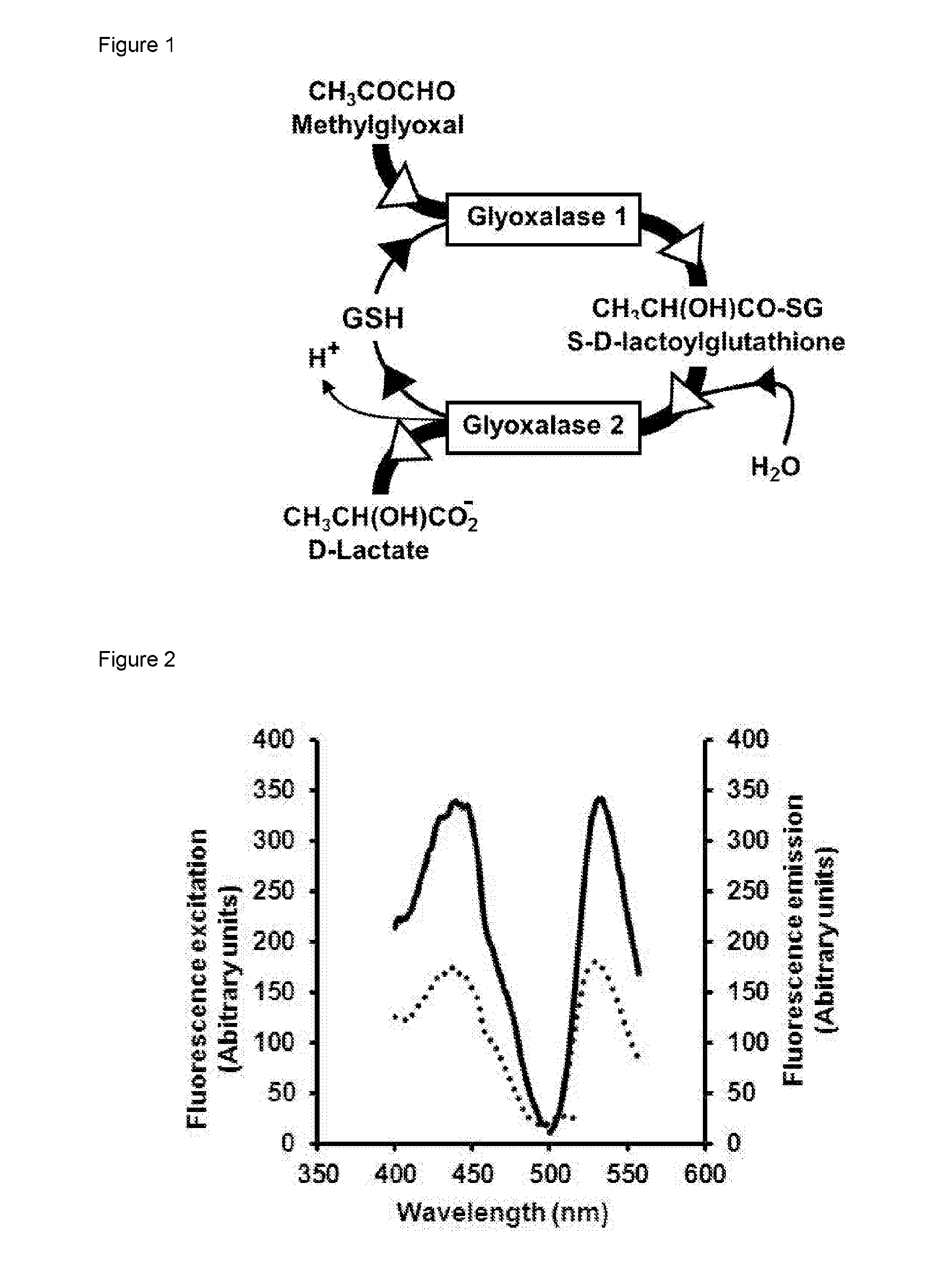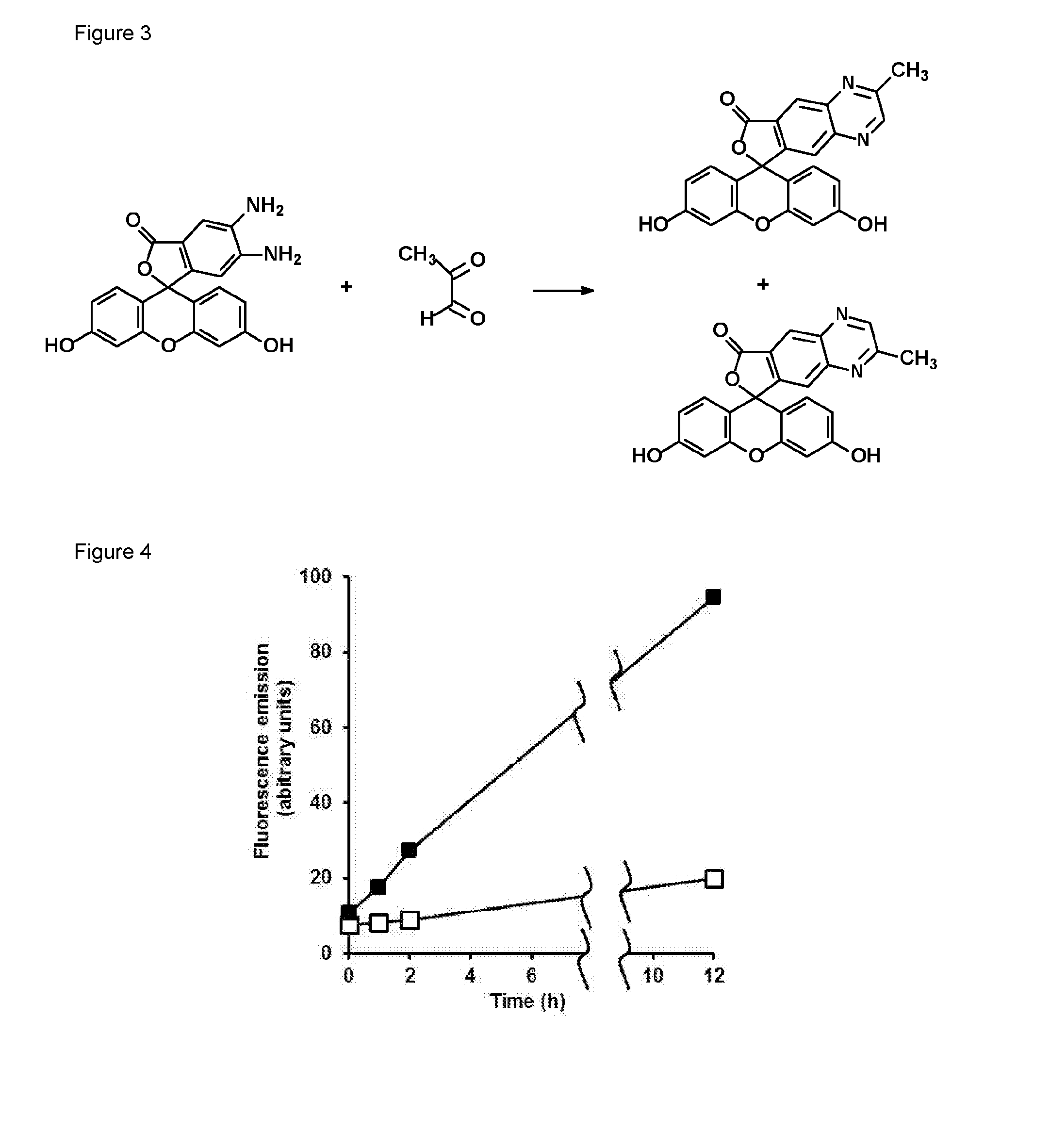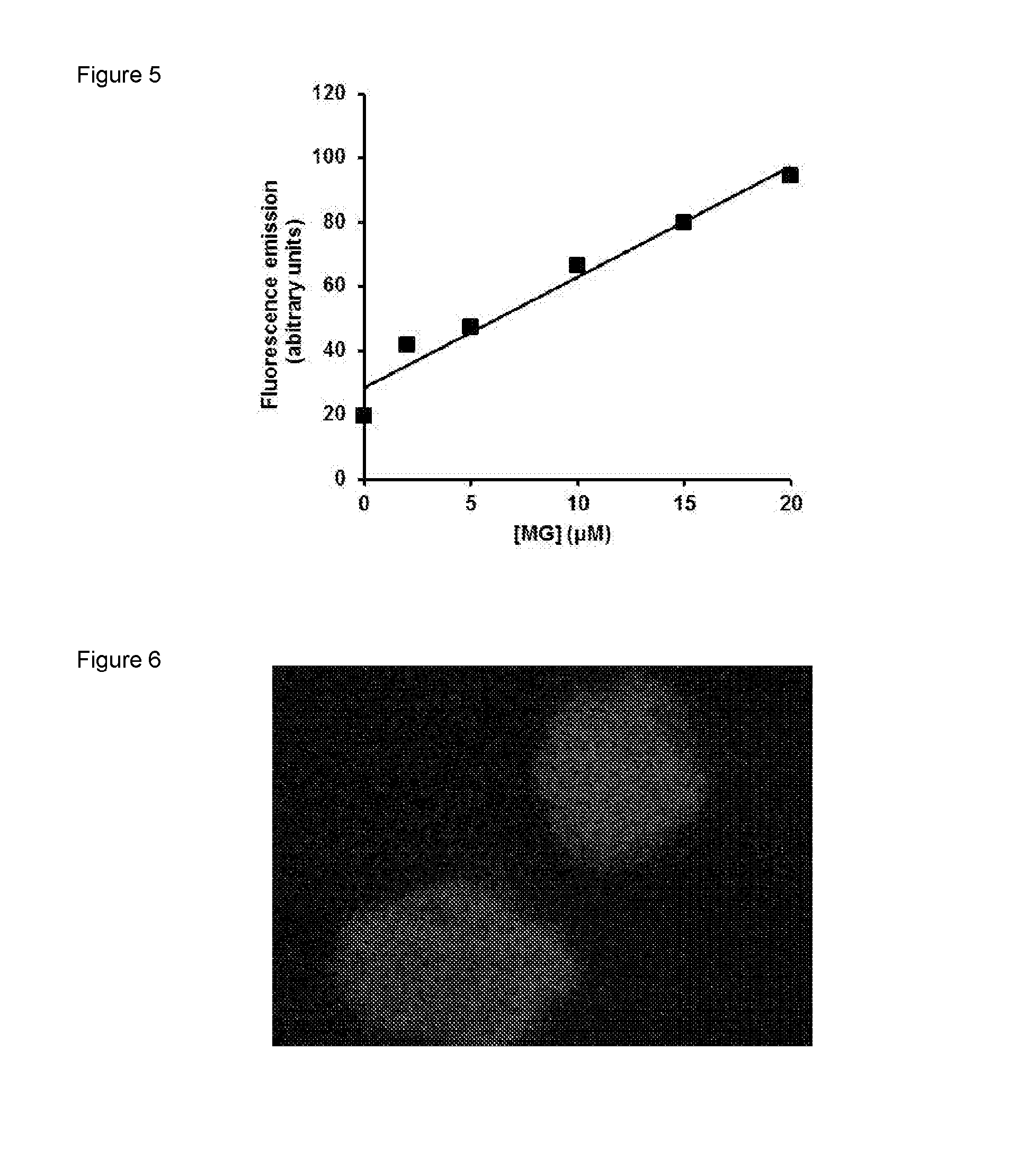Detection of alpha, beta-dicarbonyl compounds with fluorogenic probes
- Summary
- Abstract
- Description
- Claims
- Application Information
AI Technical Summary
Benefits of technology
Problems solved by technology
Method used
Image
Examples
example 1
Reaction of methylglyoxal with 4,5-diaminofluorescein (DAF-2)
[0109]4,5-Diaminofluorescein (DAF-2) was a fluorogenic probe developed for the detection of nitric oxide [6]. 4,5-Diaminorhodamine (DAR) [7], 8-(3,4-diaminophenyl)-2,6-bis(2-carboxyethyl)-4,4-difluoro-1,3,5,7-tetramethyl-4-bora-3a,4a-diaza-s-indacene (DAM BO-P″) [8] and o-diaminocyanine [5] are analogous o-diamino derivatizing agents based on different intense fluorophores. DAF-2 reacts with nitric oxide to form the fluorophore triazolofluorescein [6]. For example, incubation of DAF-2 (50 μM) with the NO donor (Z)-1-[2-(2-aminoethyl)-N-(2-ammonioethyl)amino]diazen-1-ium-1,2-diolate (DETA-nonoate), 10 μM, in 10 mM sodium phosphate buffer, pH 7.4 at 37° C., for one hour gave characteristic fluorescence of triazolofluorescein—excitation and emission maximum wavelengths of 491 and 515 nm, respectively. A further metabolite that reacts with DAF-2 is ascorbic acid which forms adducts DAF-2-DHA-5008 and DAF-2-DHA-518 which are fl...
example 2
Dose Response Curve for the Reaction of DAF-2 with Methylglyoxal
[0112]DAF-2 (50 μM) was incubated with and without 20 μM MG in 10 mM phosphate buffer at pH 7.4 at 37° C. for 24 h. There was a marked increase in fluorescence (excitation wavelength 441 nm and emission wavelength 533 nm) over the incubation period—FIG. 4. When DAF-2 (50 μM) was incubated with 2, 5, 10, 15, and 20 μM MG in 10 mM phosphate buffer at pH 7.4 at 37° C. for 24 h and fluorescence spectra were recorded for excitation and emission wavelength maxima for MG-DAF2, 441 nm and 533 nm respectively, after 24 h the results indicate that the formation of MG-DAF2 fluorescence is proportional to initial MG concentration—FIG. 5.
example 3
Fluorescence Imaging of MG in Isolated Human Leukaemia
[0113]When human leukaemia 60 cells (1×105 cells per ml) in RPMI 1640 with 10% fetal calf serum were incubated with DAF-2 (10 μM) for 40 min at 37° C., washed twice with phosphate buffered saline and re-suspended in fresh medium and incubated for 30-120 min, subsequent detection of fluorescence with excitation laser 457 nm, emission filter 470-500 nm gave fluorescence indicate of the DAF-2 MG adduct and hence an image of endogenous MG in HL60 cells—FIG. 6.
PUM
 Login to View More
Login to View More Abstract
Description
Claims
Application Information
 Login to View More
Login to View More - R&D
- Intellectual Property
- Life Sciences
- Materials
- Tech Scout
- Unparalleled Data Quality
- Higher Quality Content
- 60% Fewer Hallucinations
Browse by: Latest US Patents, China's latest patents, Technical Efficacy Thesaurus, Application Domain, Technology Topic, Popular Technical Reports.
© 2025 PatSnap. All rights reserved.Legal|Privacy policy|Modern Slavery Act Transparency Statement|Sitemap|About US| Contact US: help@patsnap.com



